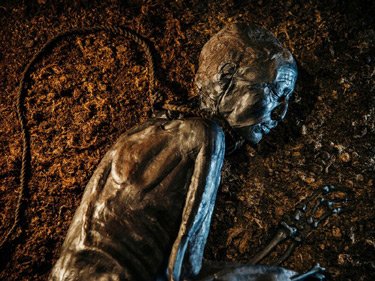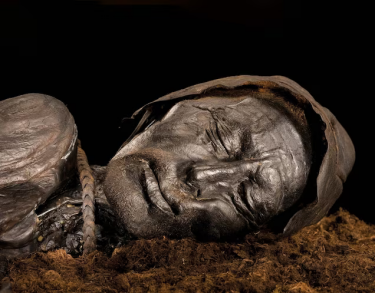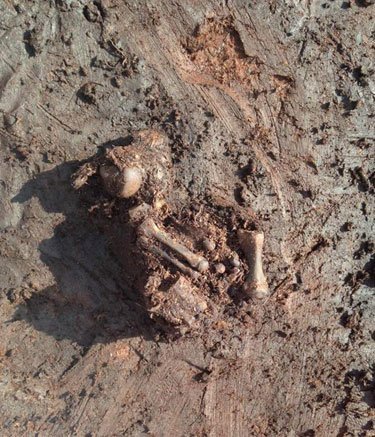
In 1950, Tollund Man’s discoverers “found a face so fresh they could only suppose they had stumbled on a recent murder.â€
Smithsonian has a major update on the latest scientific news on researching Bronze Age and Iron Age bodies found in Northern European bogs.
Archaeologists have been asking the same questions since [peat-cutters in 1950] first troubled Tollund Man’s long sleep: Who are you? Where did you come from? How did you live? Who murdered you and why? But the way the researchers ask the questions, using new forensic techniques like dual-energy CT scanners and strontium tests, is getting more sophisticated all the time. There’s new hope that, sometime soon, he may start to speak.
Scholars tend to agree that Tollund Man’s killing was some kind of ritual sacrifice to the gods—perhaps a fertility offering. To the people who put him there, a bog was a special place. While most of Northern Europe lay under a thick canopy of forest, bogs did not. Half earth, half water and open to the heavens, they were borderlands to the beyond. To these people, will-o’-the-wisps—flickering ghostly lights that recede when approached—weren’t the effects of swamp gas caused by rotting vegetation. They were fairies. The thinking goes that Tollund Man’s tomb may have been meant to ensure a kind of soggy immortality for the sacrificial object.
“When he was found in 1950,†says Nielsen, “they made an X-ray of his body and his head, so you can see the brain is quite well-preserved. They autopsied him like you would do an ordinary body, took out his intestines, said, yup it’s all there, and put it back. Today we go about things entirely differently. The questions go on and on.â€
Lately, Tollund Man has been enjoying a particularly hectic afterlife. In 2015, he was sent to the Natural History Museum in Paris to run his feet through a microCT scan normally used for fossils. Specialists in ancient DNA have tapped Tollund Man’s femur to try to get a sample of the genetic material. They failed, but they’re not giving up. Next time they’ll use the petrous bone at the base of the skull, which is far denser than the femur and thus a more promising source of DNA.
Then there’s Tollund Man’s hair, which may end up being the most garrulous part of him. Shortly before I arrived, Tollund Man’s hat was removed for the first time to obtain hair samples. By analyzing how minute quantities of strontium differ along a single strand, a researcher in Copenhagen hopes to assemble a road map of all the places Tollund Man traveled in his lifetime.
Fascinating stuff. RTWT







